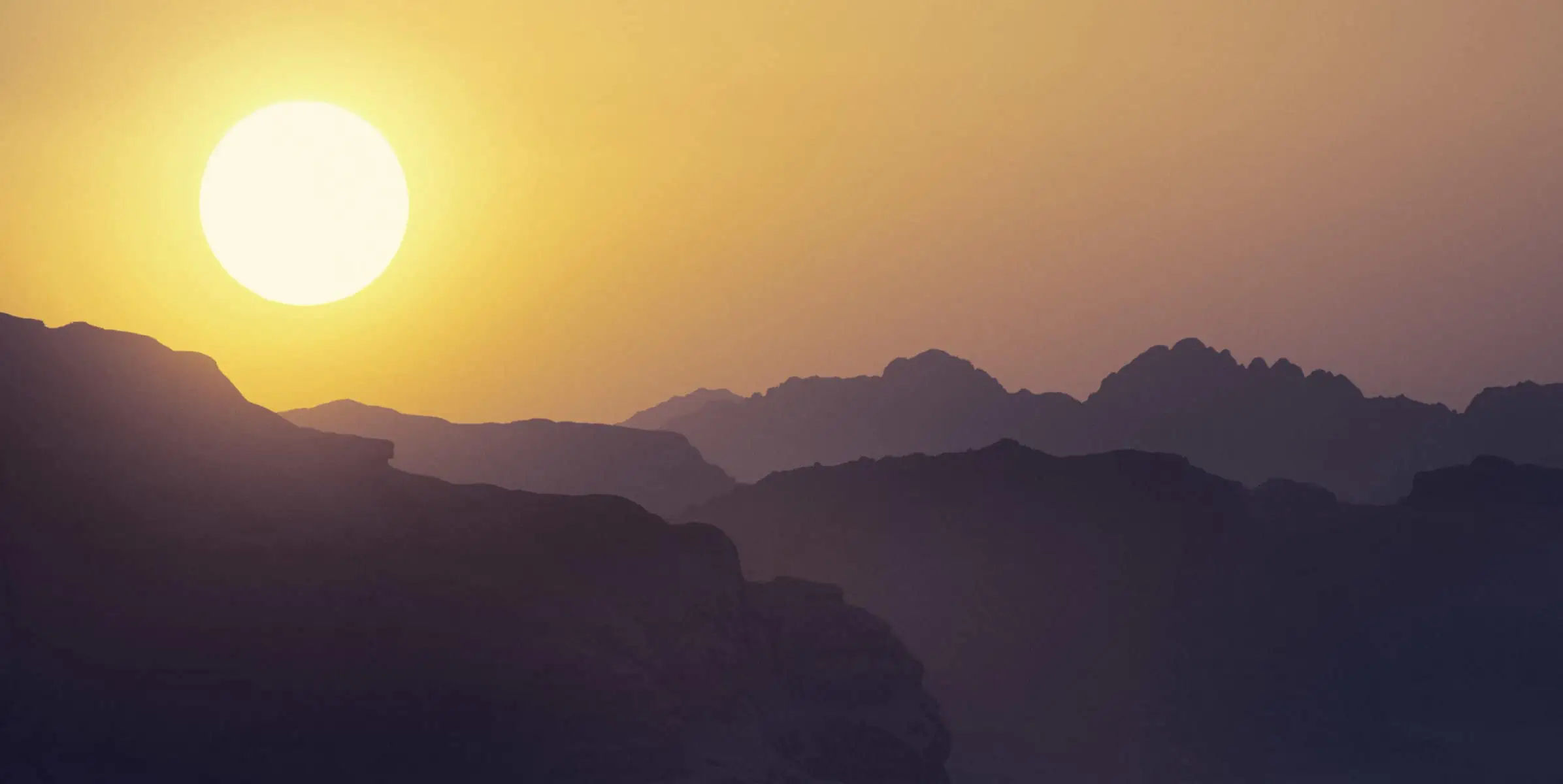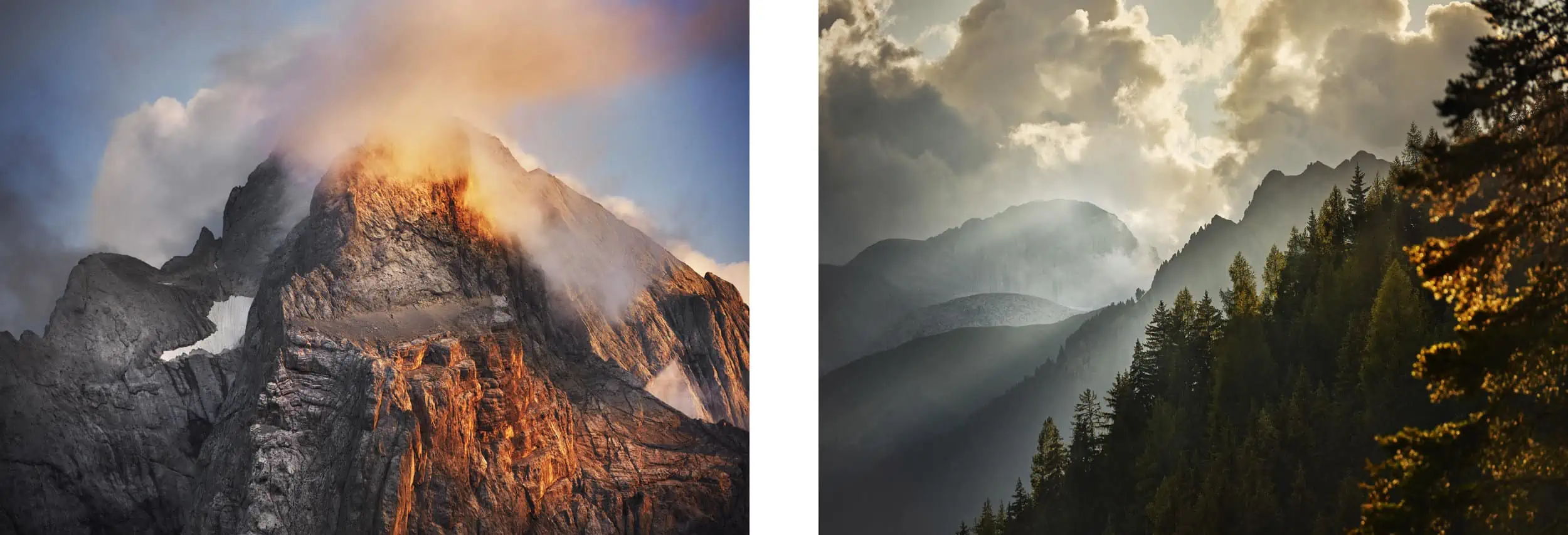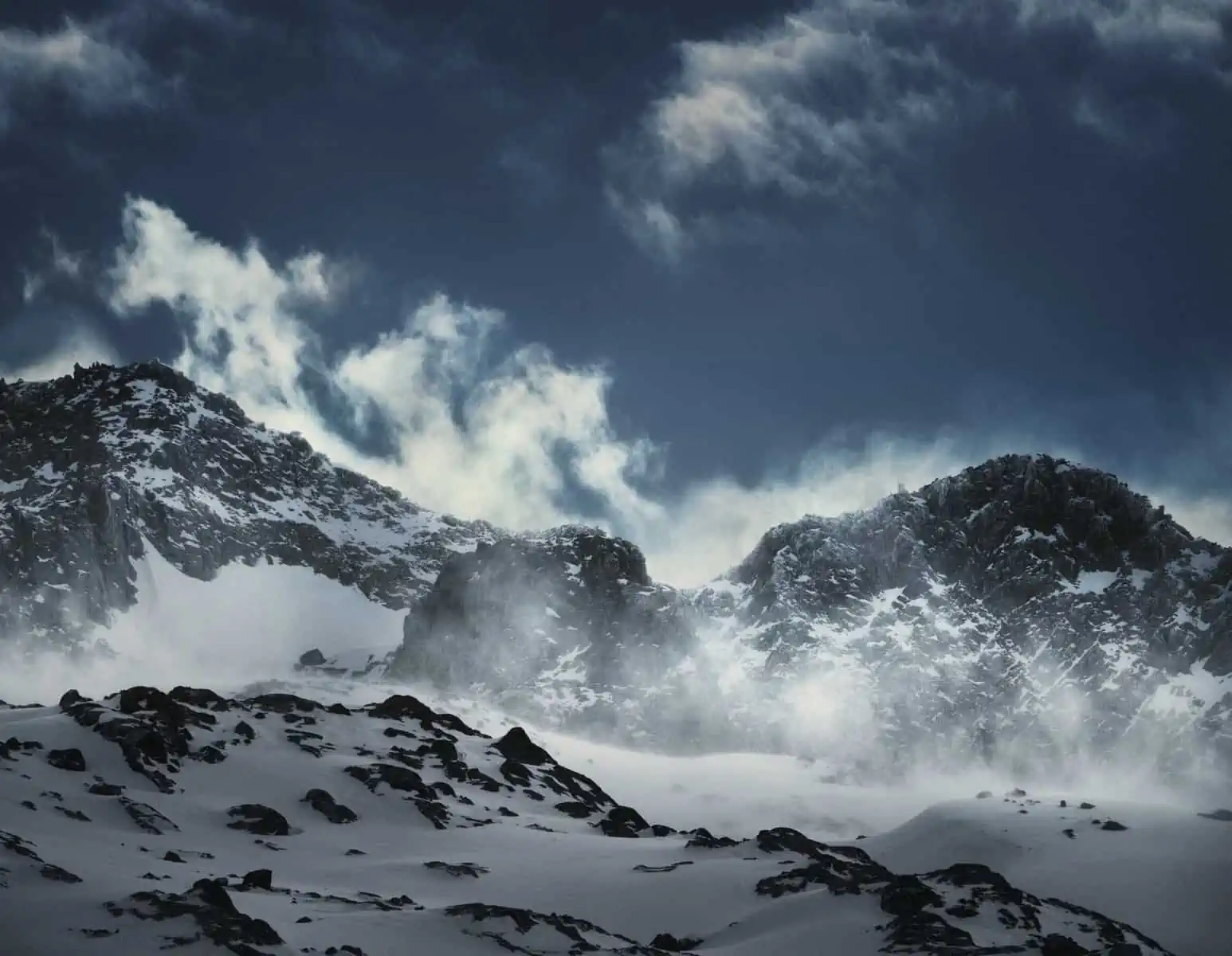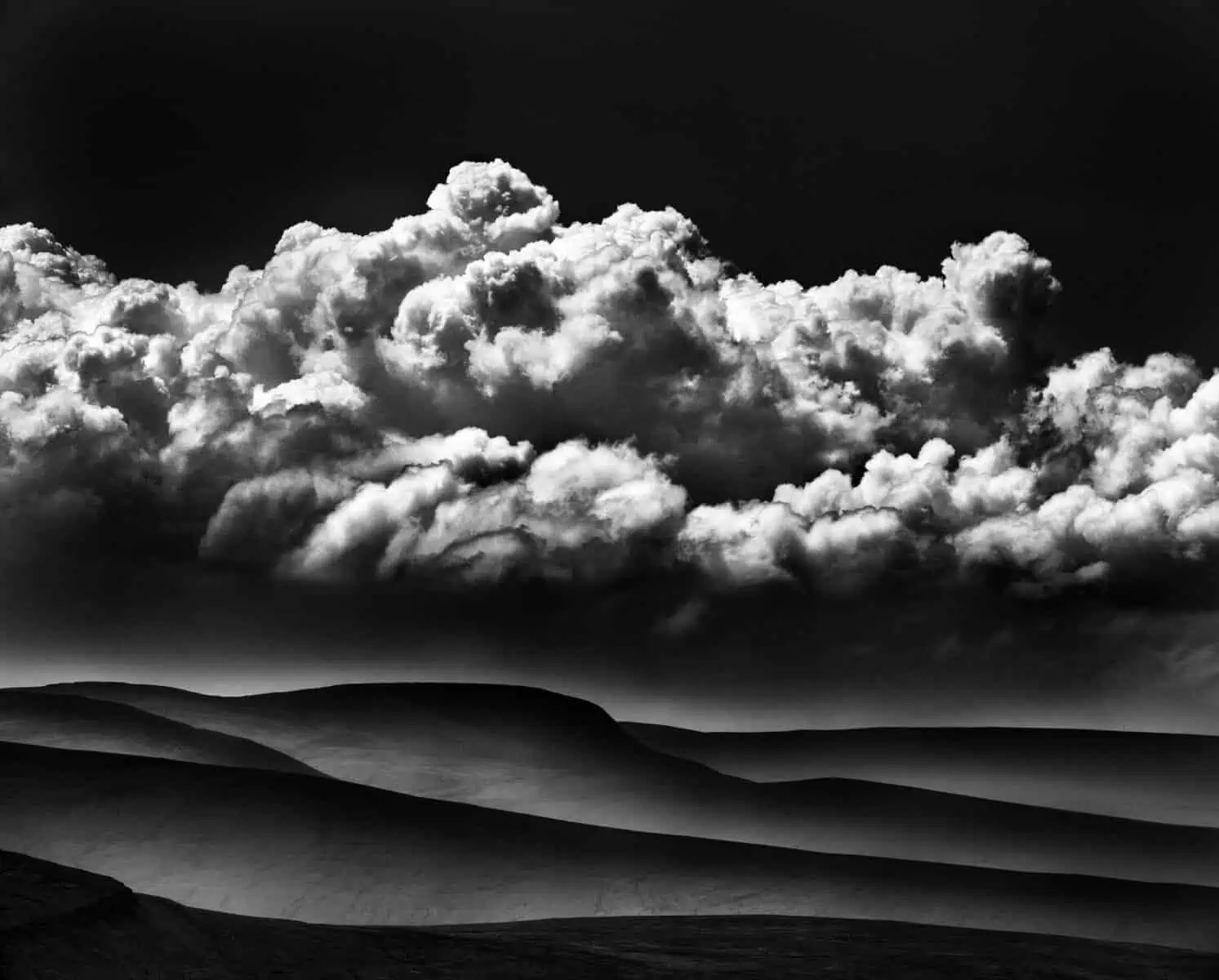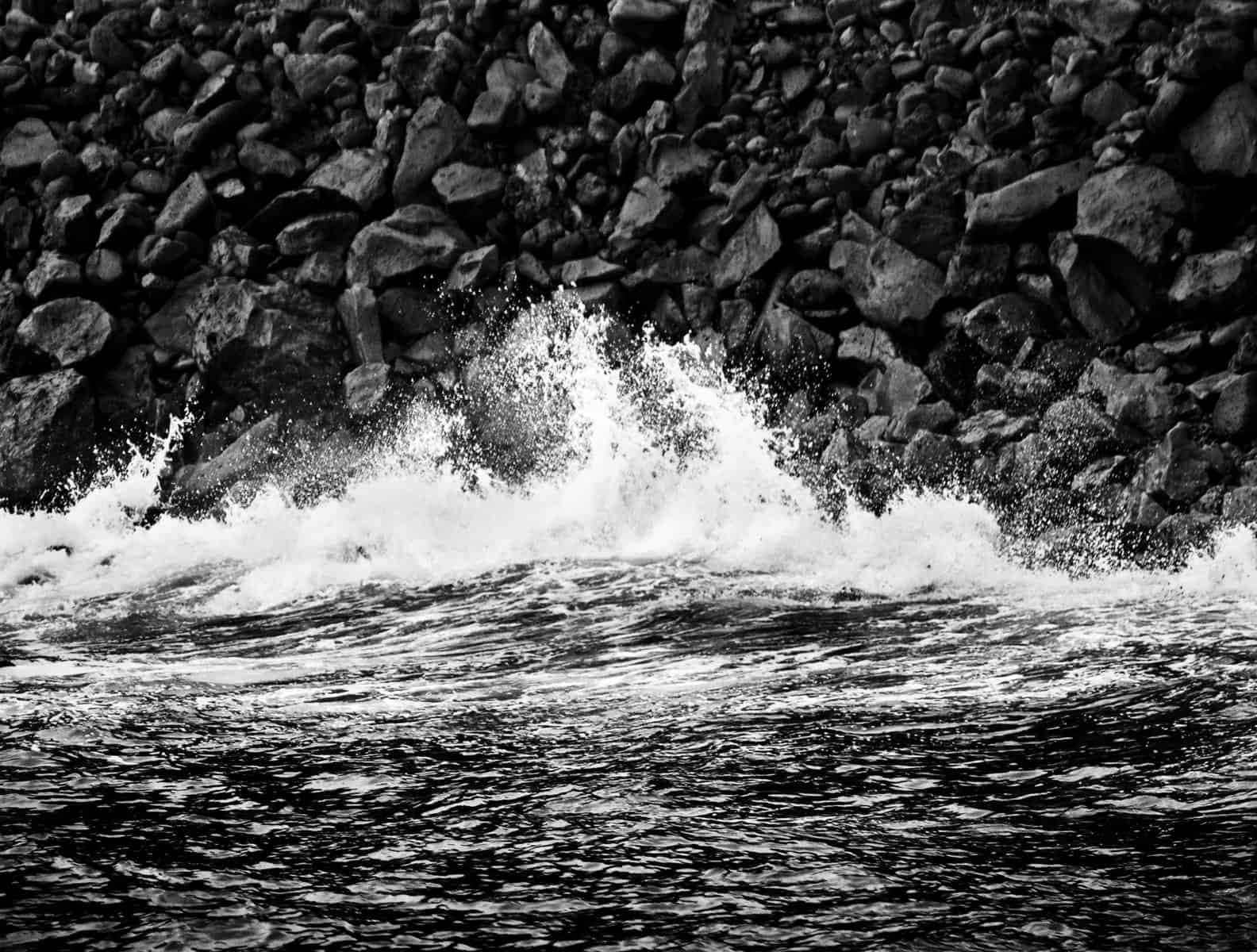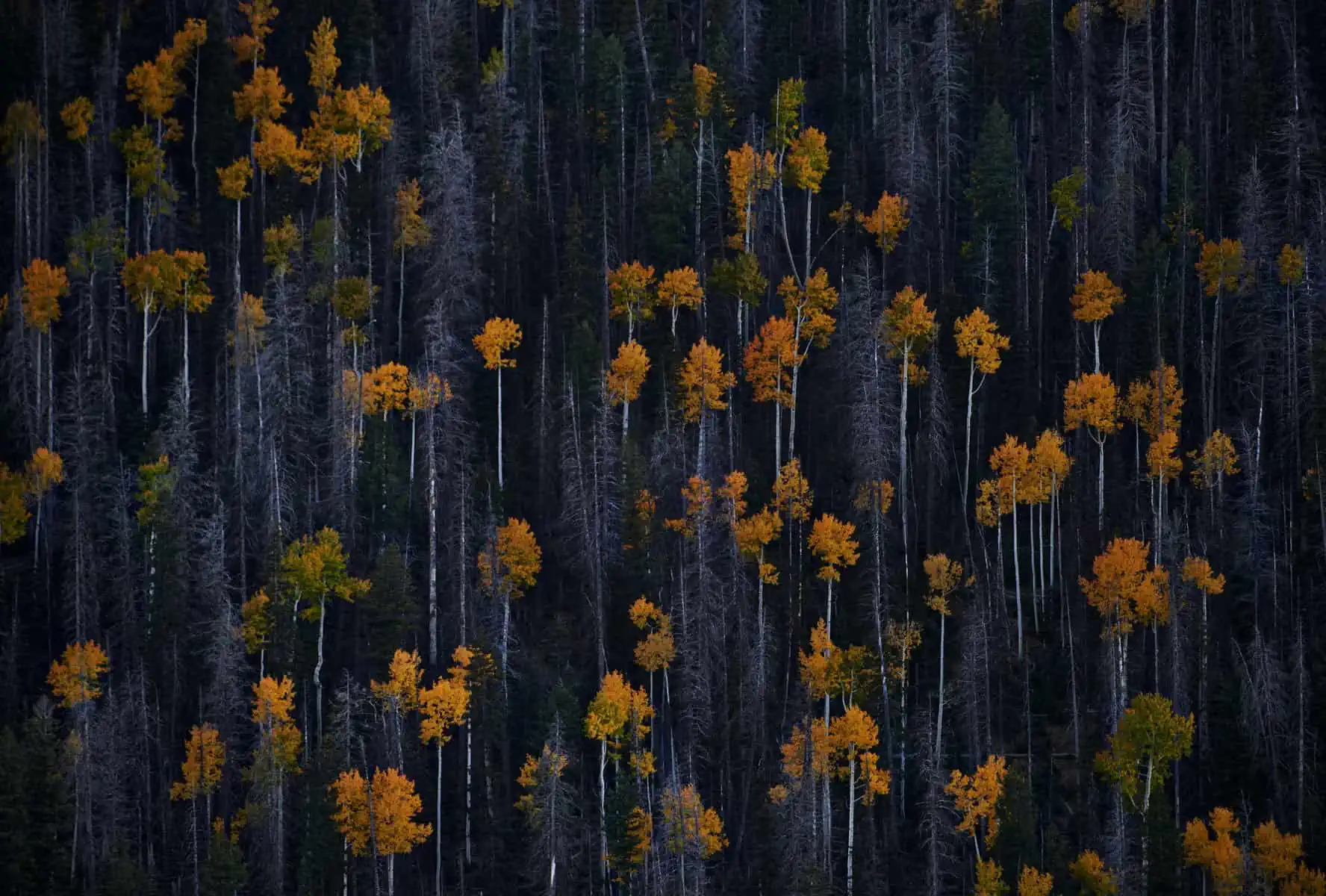When travelling, we generally try to stay as far off the beaten path as we can, but we do regularly find ourselves in spots that have become understandably popular with tourists. Whether that’s somewhere like the Tre Cime Di Lavaredo in the Dolomite Alps, or Horseshoe Bend in Arizona, sometimes, experiencing the outdoors means experiencing a very large crowd too. Wherever there are massive crowds, one thing that you are certain to see is people taking photographs. As a photographer, I can’t help but keep an eye on the equipment people are using, and the overwhelming common factor is that most of the people you see taking landscape photographs are using wide angle lenses.
Wadi Rum, Jordan. A long telephoto lens has allowed me to isolate a small portion of the horizon, allowing an abstract and graphic composition
Obviously, most of the people you see are using their phones and don’t have a choice in the lens they can use, but amongst those who are using interchangeable lens cameras, the trend is still the same: wide angles rule the roost.
Sure, you can capture amazing landscape photographs with wide angle lenses. Some of my favourite images from our work have been shot this way. Yet I can’t help but think there’s something else at play. Browsing through photography forums and magazines, it seems that sometime in the recent past, landscape photography has come to mean wide angle photography. The pattern is simple enough, someone might post in a forum saying they want to shoot landscapes, asking for advice on what equipment to buy and whilst there will be plenty of debate over which camera body is the most appropriate the logic of going wide with the lens often seems to go unquestioned.
The problem is that I think this is missing a trick. Wide angles are great, but they are often really inappropriate and, in my opinion, difficult to master. I also believe that many aspiring landscape photographers will default to wider lenses without considering what a normal or even a long lens could bring to their compositions, just because it seems to be the ‘done’ thing.
The obvious use of one lenses is to frame up distant subjects. In these images – from the Italian Alps on the left and the Austrian Alps on the right – we have used telephoto lenses to pick out details of evening light in the mountains.
The Pyrenees, Spain. The drama in this scene unfolded several hundred meters above us. The weather conditions were so severe that it would have been dangerous to have attempted to climb any closer to the ridge.
Personally, I always found myself more drawn towards longer lenses and this belief has solidified over my last few years of shooting. I find that the most successful compositions are often the simplest and/or graphic. What that means is that I find myself actively trying to eliminate distracting elements in frame when I am composing my photographs.Wide angles make this difficult, and the wider the lens, the trickier the problem.Wide angle images can very easily become confusing. There is so much in frame – so many distractions – that I’m not sure what I should be looking at, and by extension, I am not sure what the image is meant to be communicating.
Brecon Beacons, Wales. I spotted this scene as we descended Pen Y Fan. For me, the success of this image hinged on being able to reduce the composition to it’s bear minimum: I didn’t want anything to interrupt the curves of the hills at the bottom of the frame, and I carefully choose my focal length to include just the right amount of clouds.
For me, the process of landscape photography is often about what I would call reductive composition. When faced with a scene, I think about how I can simplify the composition, how I can exclude distracting elements from the composition, so that I can communicate what I want to the viewer/client’s audience as concisely as possible. My preferred working method is to use a long lens to isolate elements in a scene, and I often find these compositions more compelling than what I get from the same situation with a wider lens.This method allows me to isolate smaller compositions within the wider landscape and to be a lot more selective about what I include in my framing, which in turn, serves to boost the impact of the elements that you do keep in frame.
Longer lenses will also compress the perspective in the frame – drawing in the background so it appears relatively large in scale to foreground elements.Wide angles exaggerate perspective – foreground elements appear large in frame whilst background elements are rendered smaller and seem to recede off into the distance.Both of these can be used as compositional devices by skilled photographers, but it seems to me that the subject ‘compression’ offered by longer lenses is under exploited.
Of course, working with longer lenses requires its own way of seeing too, and I’ll be first to admit that of the compositions I visualise in my mind’s eye when presented with a scene, many do not work at all once I have the camera to my eye. Often things are too reduced – there is simply not enough in the frame to hold interest, and often times that is glaringly obvious as soon as I attempt a composition, and no amount of reframing with remedy the situation.There is also the issue that you can come away from a scene with a lot of fantastic detail images, but no overview shots – so I do always ensure to make some images with a wide or standard lens unless it is wildly inappropriate to do so.
La Palma, Canary Islands. I’ve long been fascinated by what I call ‘interfaces’ – where the natural world meets the Man-made. The seawall here was not very attractive, but I saw potential in the shapes the breaking waves were making. I used a 70-200mm plus 1.7x TC to frame up this composition and to exclude the parked cars that were just out of frame at the top.
None the less, I find that long lenses are often the best tool to translate my vision into actual photography, and, over time, I have grown to appreciate narrower angles of view and even more reduced compositions. I can literally see the journey my compositional mind has taken.For a long time now, my go to standard lens has been a telephoto zoom (70-200mm on full frame bodies and 50-140mm on APS-C).A few years ago, I started to see compositions where more magnification was needed.The first solution was to add tele converters to our kit bag – and I cannot recommend these highly enough. A good quality teleconverter is a relatively inexpensive way to greatly increase the versatility of your camera kit, and is often small and light enough to be carried around all day un-noticed. However, as time has gone by, I’ve found myself requiring even longer focal lengths than my zoom and converters could offer, so we have taken the decision to add a specialised super telephoto zoom to our kit – in our case a 200-400mm zoom.Lenses like this are expensive and physically very large and heavy – they are a massive commitment, not just in terms of their cost, but also in terms of carrying them on long hikes.In our blog post on preparation, we talked about the idea that equipment must earn its place in your bag, and this is especially so when a single lens measures in over 30cm and can easily weight over 3KG.But, if you require such lenses to achieve your vision, then there really is no alternative!
Navajo Lake, Utah, USA. A 400mm Super Telephoto on a full frame DSLR body allowed me to isolate this scene, which was close to a Kilometre away from my shooting position.
Before writing this blog piece, I looked at all of my favourite images from the past several years. Overwhelmingly, they were all made with long lenses. It also dawned on me that on many of our trips when we must prioritise travelling light, our ultra-wide lens does not even come along. I genuinely feel that a longer lens – a more selective point of view if you will – can bring something very unique to landscape photography. I’m not suggesting for you to ditch your wides angle lenses, but perhaps the next time you are framing up a scene, consider what a longer lens and a more selective view might bring.

